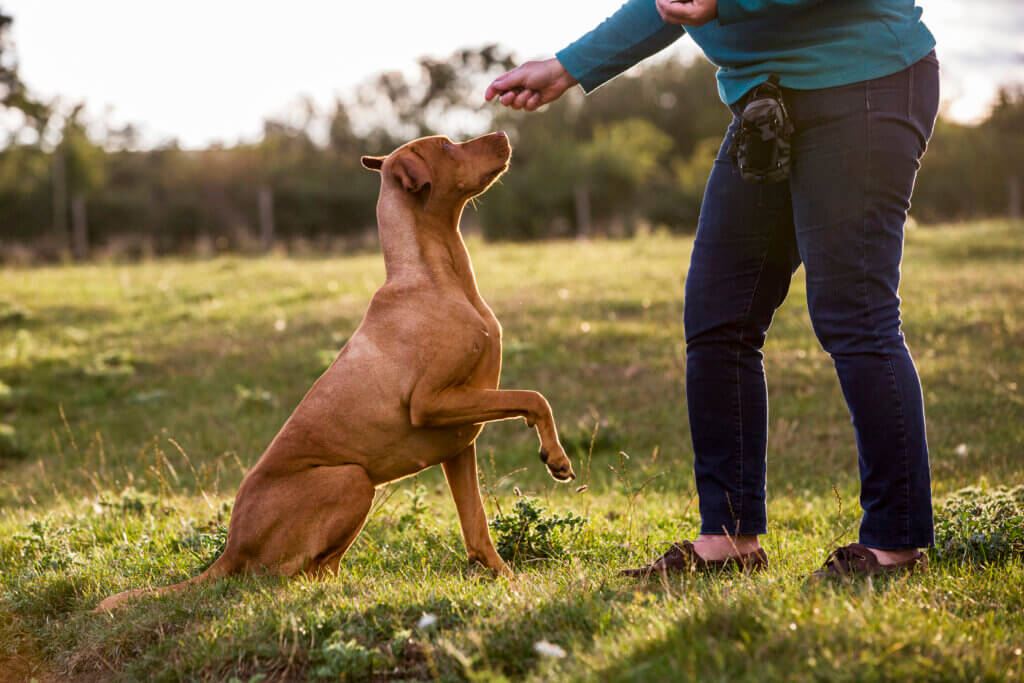If you are looking for ways to help your dog with anxiety, then you have come to the right place. This article will outline some of the techniques you can use. These include Desensitization, Obedience training, Counterconditioning, and Avoiding situations that may cause your dog to become anxious.
Desensitization
Desensitization is a technique that can help change the negative emotional reaction that your dog has to triggers. The process involves gradually exposing your dog to the trigger until it no longer has an adverse physiological response.
To start, you must identify the triggering stimulus. This can be something as simple as the sound of a doorbell. Alternatively, it may be something as traumatic as an adult man. In any case, you need to work through the problem one step at a time.
You’ll need to find out which triggers are most problematic to your dog. If you’re unsure, you can start by writing down a list of potential triggers. Once you’ve identified what triggers are most problematic, you can begin to desensitize your dog to the situation.
Dogs with anxiety or separation issues should be exposed to the triggers at a gradual pace. Start with a few minutes of exposure per day and increase the exposure until your pet is comfortable.
Counterconditioning
Dog training for anxiety using counterconditioning involves teaching your dog to associate something they are afraid of with a positive thing. In the case of an aggressive dog, counterconditioning can be an effective way to change their negative feelings toward a trigger.
The first step in counterconditioning a reactive dog is to find a calm and safe environment. This means avoiding crowds and other situations that will exacerbate the situation. You can also countercondition by introducing the stimulus in smaller increments.
A popular method of counterconditioning is the open bar/closed bar technique. With this technique, treats will flow when a scary thing is present. Eventually, your dog will be comfortable with the stimulus at low levels.
Ideally, you will be able to countercondition your dog at a level that they are both happy with and comfortable with. By practicing the technique in a safe environment, you will be able to train your dog more quickly.
Another method of counterconditioning your pet is to use response substitution. With this technique, you gradually increase the intensity of the stimulus until your dog is able to accept it.
Obedience training
Obedience training for dogs with anxiety can be a good way to reduce their stress. When dogs are anxious, they are focused on a traumatic stimulus in their environment. The dog may gnaw on door frames, window sills, or urinate in the house.
Dogs with separation anxiety can be treated with obedience training. By practicing basic obedience commands like sit, down, and stay, you can teach your dog to be more confident and comfortable in your absence. You can also use obedience behaviors to earn life rewards.
If you are unsure about how to train your dog for separation anxiety, you can contact a professional trainer. These professionals will have experience with positive and negative reinforcement.
Before you leave the house, watch your dog for signs of anxiety. This can include panting, licking, and lip licking.
There are some free apps you can download to help you check for these signs. Leaving a camera handy is another smart move. Using a camera can help you see your dog’s reaction before you leave.
Avoiding situations that trigger anxiety
If your dog has been experiencing anxiety, there are things you can do to help them feel more comfortable. There are many things that can trigger a dog’s anxiety, and it’s best to avoid them.
The first step is to understand how to recognize the symptoms of anxiety in your dog. Anxious dogs can have a variety of different reactions, including pacing, whining, and freezing. Your dog might also urinate or defecate in an inappropriate location. This is a reaction to stress, and it isn’t disobedient.
It is important to identify the source of your dog’s anxiety, and eliminate it. This can be done by avoiding the situation that causes it. For example, if your dog gets anxious around loud noises, don’t leave them in the house. You can give them a lot of attention when they are calm.
If you are concerned that your dog has a phobia, you should go to the veterinarian for a diagnosis. They will be able to determine the root cause of your dog’s fear-based behaviors and recommend the appropriate treatment.
